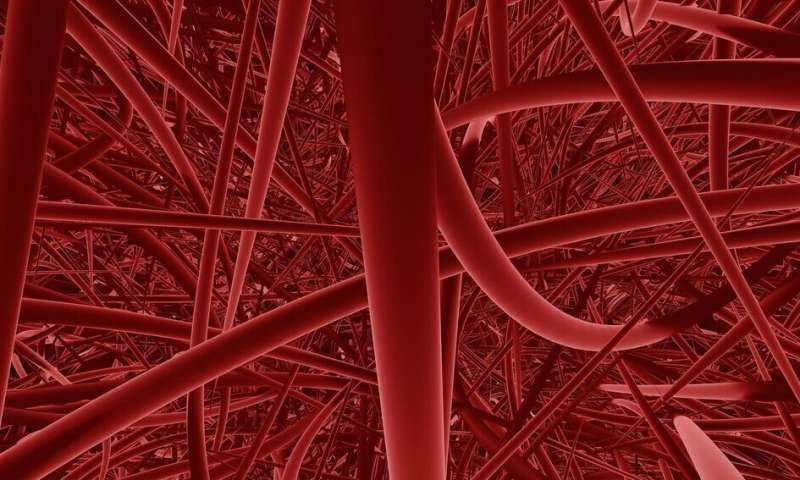New Kawasaki disease guideline for physicians released

The American College of Rheumatology (ACR), in partnership with the Vasculitis Foundation (VF), released a new guideline for the management of Kawasaki disease that addresses diagnostic issues relating to Kawasaki disease, the treatment of high-risk patients, and the management of convalescent patients.
Kawasaki disease is a vasculitis that is most common in children under 5 years old. It makes blood vessels in the body (particularly those that supply blood to the heart) become inflamed. This guideline is the final companion to three other ACR/VF vasculitis guidelines released in July 2021.
"Kawasaki disease continues to be an area of evolving understanding in clinical treatment," said Mark Gorelik, MD, an Assistant Professor at Columbia University Vagelos College of Physicians and Surgeons in New York, and the lead investigator of the guideline. "There are various degrees of severity in this disease and a set of complications and therapies that rheumatologists should be aware of. These guidelines will help clinicians better treat patients by augmenting existing guidelines from the American Heart Association, especially for complex patients seen by rheumatologists."
The guideline provides eleven treatment recommendations, a good practice statement that all Kawasaki disease patients should be initially treated with intravenous immunoglobulin (IVIG), and an ungraded position statement on the use of either non-glucocorticoid immunosuppressive therapy or glucocorticoids for patients with acute Kawasaki disease and persistent fevers after repeated treatment with IVIG. The strong recommendations include prompt treatment of incomplete Kawasaki disease, aspirin therapy, and obtaining an echocardiogram in the setting of shock. The conditional recommendations include use of IVIG with other adjuvant agents for patients with high-risk features for IVIG resistance and/or coronary artery aneurysms.
"IVIG is the central therapy for patients with Kawasaki disease and should be administered as soon as the diagnosis of Kawasaki disease is made. IVIG significantly reduces the rate of coronary artery aneurysms," said Dr. Gorelik.
Two recommendations in the new guideline differ from current standards. Currently, all patients with Kawasaki disease are treated essentially identically. The guideline recommends higher risk patients be treated with short courses of corticosteroids at time of first diagnosis. The guidelines also recommend that physicians can choose to use either low or high dose aspirin for therapy, since there is no evidence that either higher or lower doses are more effective for preventing vascular complications.
"Kawasaki disease is the leading cause of acquired heart disease in children," said Joyce Kullman, Executive Director of the Vasculitis Foundation. "This guideline will hopefully take the guesswork out of determining which treatments might work best for newly diagnosed patients, or patients who have been under treatment for a while without success. "
While the guideline was being developed, the COVID-19 pandemic began. A novel multisystem inflammatory syndrome in children (MIS-C) associated with COVID-19 emerged with some features suggestive of Kawasaki disease. The ACR has published a separate clinical guidance on MIS-C, but further study is needed to understand the relationship between MIS-C and Kawasaki disease.
"Based on clinical experience with many MIS-C patients, recognition and differentiation of MIS-C from classic Kawasaki disease is important. Patients who meet criteria for Kawasaki disease should be treated using the therapies discussed in this guideline. Additional study is needed to determine optimal treatment for MIS-C with and without Kawasaki disease features," said Dr. Gorelik.
Like many other ACR guidelines, the guideline for Kawasaki disease was developed using Grading of Recommendations Assessment, Development and Evaluation (GRADE) methodology, which creates rigorous standards for judging the quality of the literature available and assigns strengths to the recommendations.
More information: The guideline details are available here.
Lauren A. Henderson et al, American College of Rheumatology Clinical Guidance for Multisystem Inflammatory Syndrome in Children Associated With SARS–CoV‐2 and Hyperinflammation in Pediatric COVID‐19: Version 3, Arthritis & Rheumatology (2022). DOI: 10.1002/art.42062

















